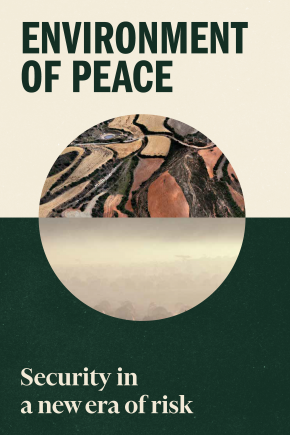Environment of Peace: Security in a New Era of Risk

The environmental crisis is increasing risks to security and peace worldwide, notably in countries that are already fragile. Indicators of insecurity such as the number of conflicts, the number of hungry people and military expenditure are rising; so are indicators of environmental decline, climate change, biodiversity, pollution and other areas. In combination, the security and environmental crises are creating compound, cascading, emergent, systemic and existential risks. Without profound changes in approach by institutions of authority, risks will inevitably proliferate quickly.
Environment of Peace: Security in a New Era of Risk surveys the evolving risk landscape and documents a number of developments that indicate a pathway to solutions—in international law and policy, in peacekeeping operations and among non-governmental organizations. It finds that two principal avenues need to be developed: (a) combining peacebuilding and environmental restoration, and (b) effectively addressing the underlying environmental issues. It also analyses the potential of existing and emerging pro-environment measures for exacerbating risks to peace and security. The findings demonstrate that only just and peaceful transitions to more sustainable practices can be effective—and show that these transitions also need to be rapid.
Environment of Peace: Security in a New Era of Risk offers policy principles and recommendations for navigating this new era of risk. A longer report setting out the evidence base in detail will be published later this year.
Read more about the Environment of Peace initiative here and visit the Environment of Peace report website.
Foreword
Executive summary
1. Two crises and a deficit
2. A new era of risk
3. A just and peaceful transition
4. Foundations of a new security
5. Towards an Environment of Peace
Conclusion


















